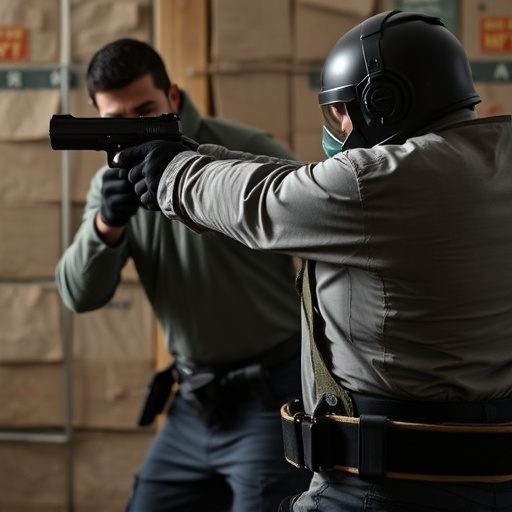Understanding electrical current spread in compact stun guns for purse carry is crucial. Advanced tech like FEA and CFD analyze safety, effectiveness, and user protection, ensuring these devices balance coverage and intensity for on-the-go defense against assailants while minimizing collateral damage.
Electrical current spread patterns play a pivotal role in understanding the effectiveness of compact stun guns designed for purse carry. This article delves into the intricate dynamics of current flow in these compact devices, highlighting the significance of precise pattern analysis. We explore advanced methods to assess safety, focusing on optimal purse carry solutions. By examining various techniques, we aim to enhance user protection and provide insights into the development of efficient, compact stun guns tailored for personal safety while ensuring seamless integration with everyday accessories like purses.
- Understanding Current Spread Patterns in Compact Stun Guns
- Analysis Methods for Optimal Purse Carry Safety Assessment
Understanding Current Spread Patterns in Compact Stun Guns

Understanding the spread pattern of electrical current is crucial in compact stun guns designed for purse carry. These devices utilize advanced technology to ensure their effectiveness at close range, where compact size and swift deployment are paramount. The stun gun’s ability to distribute a powerful electric shock over an area maximises its impact on immobilising an assailant while minimising collateral damage.
In the context of compact stun guns for purse carry, the spread pattern needs to balance intensity with control. A wider spread can cover more surface area but may reduce the force of the shock. Conversely, a tighter pattern concentrates the current in a smaller area, providing stronger jolts. Modern designs meticulously calibrate these parameters, ensuring users have both the reach and punch needed to deter attacks effectively on-the-go.
Analysis Methods for Optimal Purse Carry Safety Assessment

When evaluating the safety and effectiveness of compact stun guns designed for purse carry, advanced analysis methods play a pivotal role in ensuring optimal protection for users. These methods go beyond simple lab testing to consider real-world scenarios where such devices might be employed. Techniques like finite element analysis (FEA) simulate the electrical current spread pattern, offering insights into how the energy is distributed across different body areas upon activation. This helps researchers and manufacturers identify potential hotspots or uneven current density, crucial for designing stun guns that maximize impact while minimizing side effects.
Additionally, computational fluid dynamics (CFD) models can predict heat transfer and temperature rise within the human body, providing a comprehensive understanding of the physiological response to stun gun usage. By combining FEA and CFD, experts can assess not just the immediate electrical effect but also the thermal consequences, particularly in compact designs where heat dissipation is a concern. This holistic approach ensures that compact stun guns for purse carry are not only powerful enough to deter assailants but also safe for the user’s well-being.
Compact stun guns, designed for purse carry, pose unique challenges and opportunities in terms of electrical current spread patterns. By employing advanced analysis methods, we can ensure optimal safety assessments. Understanding how current spreads ensures that these devices effectively deter threats without causing undue harm. This study highlights the importance of precise evaluation techniques to enhance the effectiveness and responsible use of compact stun guns, catering to personal safety needs while navigating public spaces.
